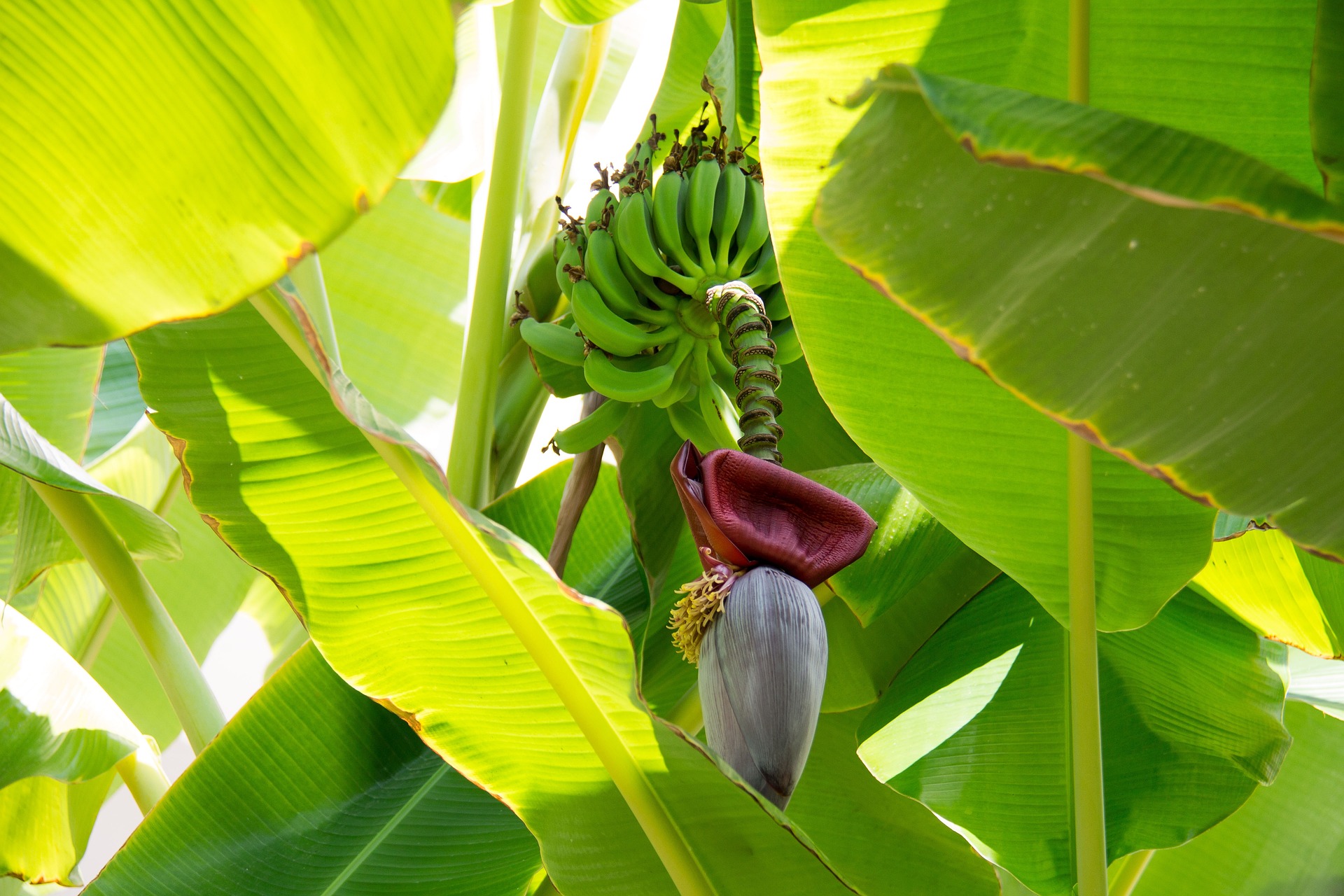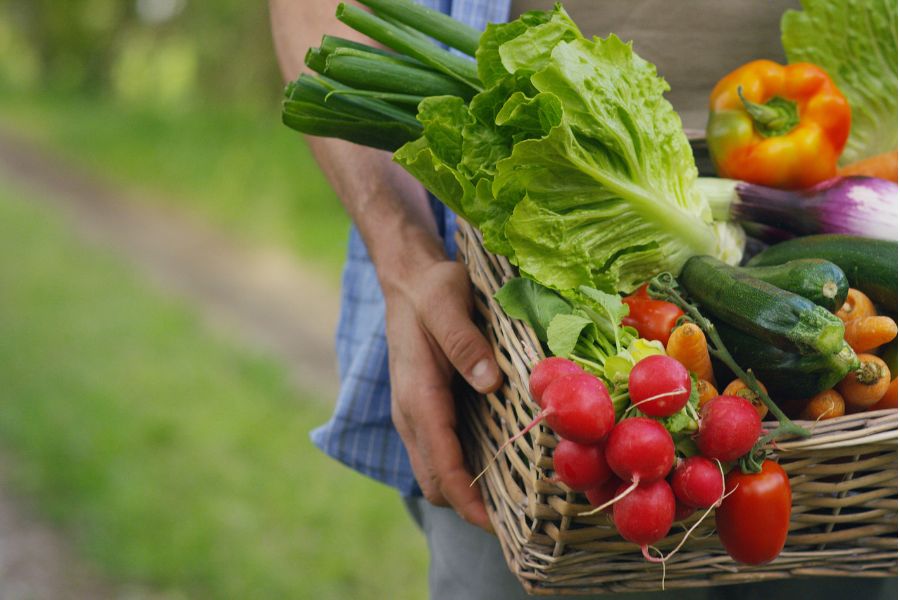Horticulture CDP: Implementation, regional & sectoral issues will matter most
Prof Basanta K. Sahu, Indian Institute of Foreign Trade, feels that the targets envisioned in the horticulture Cluster Development Programme (CDP) need to be juxtaposed with the distinct issues faced by the sector. Resolving scale challenges, branding products internationally, setting up of farm and multi-modal infrastructure, ensuring technology integration and adhering to global standards are critical to the success of the programme.

Horticulture is one of the oldest and most important components of the entire agriculture system. In the agricultural economy, it has an enormous role in terms of production, productivity, employment, seasonality and value addition. It is more remunerative and one of the key drivers of agricultural growth. For small and marginal farmers, horticulture is preferred due to it labour intensive nature, higher productivity and more market and technology orientation. Interestingly, the changing dietary composition and economic and market conditions are driving forces for growth of horticulture sector, which have drawn much attention of policy makers and others.
From the demand side, the scenario has changed and greatly enhanced the potential for horticulture products across the world, including India. Demand for horticulture products has been augmented due to several factors, while its supply side is not yet ready to meet the diverse demand in India and internationally. While these demand-supply gaps in horticulture could be opportunities for different stakeholders, it has drawn attention of policy makers (though late) in India.
There are two major reasons for this growing demand. Firstly, people can afford horticulture products, as their incomes or purchasing power have relatively increased. Their dietary choices have shifted from conventional cereal-based food items to non-cereal based food items including horticultural products. Secondly, people are more aware of their health, nutrition and food requirements, where horticultural products are better choices. Similarly, importance of seasonal and local varieties of horticulture products play a crucial role.
Why is horticulture a fit for India?
Given the diverse agro-climatic zones in India, the development of horticulture is really suited to the country’s conditions and constraints. Many horticulture crops are more labour-intensive not land-intensive in nature. Hence it is suitable for a land-scarce rural labour surplus economy like India, where average farm sizes are declining. Relatively high rate and intensity of use of labour in horticulture activities is good for addressing India’s growing rural employment issues.
Furthermore, horticulture is highly input based and market-oriented and now becoming technology-oriented. Today, horticulture is focused on developing high yielding varieties, new varieties, and off-season varieties, in accordance with the demands of the market. Many buyers are highly discerning on factors like taste, colour, seasonality, etc.
Scarcity of conventional fruits and vegetables during the off season pushes prices up, but there is a market for people who are ready to buy. Better agri-food network, technology use and supply chains are supporting the growing market for horticultural products. It influences supply side also, as many fruits and vegetables are now produced under controlled production environments to meet the growing off-season demand. Due to these technology interventions, market prices of horticulture products are always assured to some extent, as compared to other conventional agricultural products like rice and wheat.
Introduction to CDP
The government recently launched the Horticulture Cluster Development Programme (CDP) for the integrated and market-led development of 53 horticulture clusters with 12 clusters to start on a pilot basis. The target is to cover 10 lakh farmers and investment of Rs. 10,000 crores in next 5-6 years.
Though the CDP’s intention and focus is on some of the core issues pertaining to the horticulture sector – pre-production, production, post-harvest, management, logistics, multimodal transport system, branding, marketing, etc. but the coverage and outcome projections seem highly over-ambitious. Some structural and operational issues of Indian horticulture do not seem to be adequately addressed by the proposed programme.
Operating below the scale threshold
Horticulture crops cultivated in India have the major problem of scale of operation that accentuates returns and market problems. For economies of scale and better return, a community farming program or integrated farming under FPOs or some local-level cooperative farming arrangement is important, but it is not easy task; given situations of land-based activities in the rural areas. Growing horticulture crops in conventional ways, particularly in smaller areas or on a smaller scale will not be remunerative – neither will it be market-oriented nor cost effective.
The cluster-specific approach has certain typical challenges. Different clusters will have different requirements and local situations. Anantapur in Andhra Pradesh, which cultivates bananas, has different requirements and constraints as compared to the grapes of Nasik. So, you have to treat each and every cluster as a separate entity based on sectoral and local issues rather having a centralized plan and process. Policy needs to therefore be more de-centralised, sector and local specific.
Linking with value chains
Another issue is linking agriculture productively with national and global value chains, particularly horticulture, which need special treatment in terms of storage, packing, transport and delivery. One has to improve and ensure dependable multimodal transportation and logistics support. Horticulture requires special containers, transport systems, storage, etc.
India has diverse topography and regions to cover with specific focus on local factors, which is often missed out under general storage, transport and multimodal systems. Even at the district level, basic post-harvest facilities like cold storage are not available for general agricultural crops. So required farm infrastructure, especially for market oriented high value horticultural crops, is vital for the success of CDP.
It is also important that adequate public investment on such farm infrastructure can attract private investment and participation. But the past experience of public investment in farm sector has not been impressive. At community and famers level, their involvement in horticulture is crucial and they will be benefited, but this will depend on how to mobilize them, their scale of operations, input delivery, market conditions, technology, support systems, etc.
No MSP in horticulture
Unlike major food crops like rice and wheat horticulture crops are not covered under MSP or any other assured price system. Our field experiences in different states in India shows that some farmers primarily enter into horticultural products to avoid both market and weather risks in common agricultural products. Without minimum support price assurance, as is the case of other agricultural products, it may be difficult to ensure effective participation of producers and scale of production in long run.
Initially, farmers may be interested for horticulture crops with the help of subsidies and other supports, but they may deviate from it in the absence of assured remuneration and failure to cope with production risks and market volatility. The problems gets compounded as horticulture is different from other crops and markets are fragmented and oligopolistic in nature.
Technological issues
Horticulture is a very seasonal, diversified and segmented activity based on the local climate, preferences and natural resource endowment. Given the recurrence of climate changes and environmental issues, it is difficult to ensure profitable and sizeable horticultural production without technological support and controlled production environment.
In order to achieve better yield, variety and quality products and sustain growth of horticulture, a strong technological supports followed by quality seeds, inputs, fertilizers, post-harvest management, assured market and procurement are essential. However, hesitancy of farmers to adopt new technology, replace local varieties and opt new crops could be a hurdle.
Export imbalance
India’s diverse agro-climatic zones and production conditions favour high potential of diverse agri-exports to more than 100 countries, particularly in high value horticulture products like fruits, vegetables, aromatic and medicinal plants, flowers, spices, honey etc.
India is the second highest producer in the world, and horticulture products account for about 40% of India’s total value of agriculture. But around 35% or 1/3rd of the total agricultural exports are coming from horticulture. Spices form around 35-37% of the total horticultural products. There is huge scope for horticulture exports, particularly of processed fruits and vegetable products. Some new export items like herbal products, seeds and flowers are coming up now.
Though India is one of largest producers of fruits and vegetables in the world, its horticulture exports include mostly spices and cashew nuts, showing the imbalance which needs to be taken care of.
As regard to horticulture export markets, India is in an advantageous position, having a fairly good number of potential export markets in Southeast Asia, Middle East, US, Europe and Africa. However, each and every market, especially in developed countries, has different norms and standards that restrict India’s exports. CDP has a good chance of succeeding by meeting these norms, reducing restrictions through better trade negotiation, better production practices, farmers education and following better standards and norms.
Quality issues
This is a more complex issue and often get influenced by other aspects of policy and practices. Given the variable and perishable nature of horticulture products, quality, standards and norms continue to be challenging.
There can be some other reasons for rejections, even if quality is consistent with the global standards. Strong, acceptable, competitive and affordable process of testing, tracing and certification of products are vital for markets.
There are regional testing laboratories, but these are inadequate and often not reliable. Similarly, multiple agencies involved in testing and certification sometime make it more complex. To make quality checks, testing and certification easy, affordable and accessible expansion and use of existing facilities under FCI, CW, Govt. labs and Central Food Processing Park can be considered for local users.
Indian farmers and producers need to be educated and trained about new norms, quality and standards, particularly regarding using of pesticides, fertilisers and other input to improve quality and certification. A complete and assured quality check can ensure better prices and minimum export rejection at foreign ports/markets.
Technology not reaching the farm producers
India has a large number of agriculture research centres and institutions for fruits, vegetables and other horticulture crops – almost one research institution for each and every fruit and vegetable. Some of these research institutions are the finest and are producing good results in term of new varieties, techniques, farm practices and post-harvest technology. Unfortunately, our farmers are not following these new practices or varieties and many don’t even know about them. In this regard the poor agri-extension services, inadequate public interventions and no or abysmally low private participation are largely to blame.
In the absence of an effective agri-extension services, many scientific farm discoveries, new technologies and practices already developed in Government Research Laboratories are not reaching the farmers. CDP can cover and manage these issues at the regional level and ensure best practices, thereby achieving desirable outcomes in the horticulture sector.
Learnings from other markets
Indian farmers are the most competitive in the world, but not Indian agriculture.
This statement explains the very core of India’s agriculture. Compared with other countries, our farmers can produce at a very competitive level, but they fail to avoid intermediaries and market constraints – both in product and factor markets. There are very high price gaps between farm gate and end users and this remains true in many crops and regions.
You ask banana farmers in Anantapur, Andhra Pradesh or guava farmers in Allahabad, Uttar Pradesh, who follow their local indigenous practices to remain competitive in crop selection, input use, farm practices, storage etc, which are distinctive from a global perspective. Many of them are confronted with the problems of market access, storage, transport, modern technology, scale of operation, branding etc. A comprehensive CDP addressing these issues can be a win-win situation.
Implementation roadmap for horticulture CDP
Some of the major areas for CDP to focus are worth noting here. First, integrated approach is important as multiple cropping or integrated cropping are very common in Indian context. Horticulture cannot be consider in isolation as different crops are grown simultaneously or in sequence of other land-based activities. While undertaking cultivation of different crops, farmers often have to manage challenges pertaining to water, land, credit, labour, fertiliser, markets, connectivity, roads, infrastructure or storage etc. which may be common to both horticulture and other crops.
The second argument is pertaining to market-led development of pre-production, production and post-harvest management, where CDP has enough role to play.
Third, branding of Indian horticulture products is possible due to their unique taste, size, colour and availability. Any horticulture product that India produces, whether it is mango, banana, papaya or guava, has unique attributes that are hardly available anywhere. This is due to our advantages of different agro-climatic zones, which help produce different varieties of products.
Here India has the opportunity to brand its products aggressively. This can also be integrated with other programmes like GI. We already have GIs for certain products like Alphonso Mangoes, Vazhakkulam Pineapple, Jalgaon Bananas and Darjeeling tea. But we need to promote and showcase this strength by branding these products carefully. For branding in the international market, serious efforts with a professional mechanism are required.
Another important point is farm infrastructure. The districts that the cluster development programme has selected initially are mostly in hilly or upland areas like Kinnaur, Himachal Pradesh, Meghalaya, and West Bengal. These are terrain lands and providing farm infrastructure there may not be an easy task.
Since implementation of this programme is being planned through the state government i.e. Cluster Development Agency (CDA), it could pose implementation challenges. Agriculture is a state subject and different states have different policies, plans and rules. Coordination and organizational set up between centre, state and other stakeholders is vital for implementing CDP. Success of this programme considerably depends on local farmers and stakeholders like the FPOs.
The current programme should not be seen in isolation; rather it should be synergised with other major schemes like Agricultural Infrastructure Fund, Prime Minister’s Kisan SAMPADA Yojana and the mission for Integrated Development of Horticulture. In earlier budgets, the government has proposed 10,000 Farmers Producer Organisations, which can be linked with CDP.
Coming to the targets, the program promises to cover 53 cluster development programmes across the country in 5-7 years with an investment of Rs 10,000 crores, which seems over ambitious. It is not sure about the basis of the investment figure, but certainly, it will be important to consider that different clusters have different requirements and assessments.
Implementation CDP should be preceded by detailed surveys of clusters to generate data points like cropping pattern, land size distribution, labour force participation, total number of farmers, those who are involved only in horticulture, mixed cultivation of horticulture and other crops, etc. One crucial aspect is the last mile connectivity to hilly and terrain areas, through this programme. Similarly, target of notable increase in horticulture products exports is possible if India can manage and overcome the trade restrictions, trade compliances, standards, etc, through negotiations. India needs to comply with international standards and norms without which, it will not be possible to achieve the target as envisioned in the programme.
Dr. Basanta K. Sahu is a Faculty in Economics Division, Indian Institute of Foreign Trade (IIFT), New Delhi. Views expressed are personal.













Leave a comment